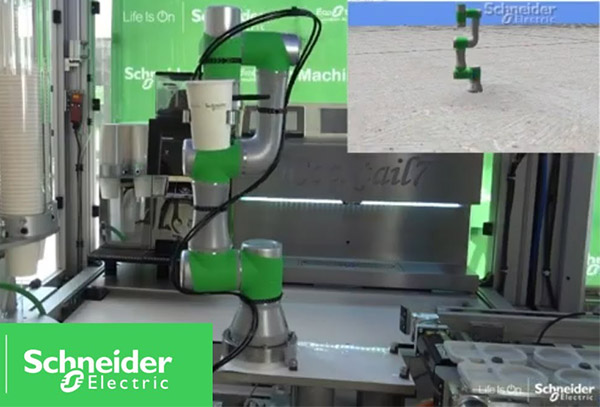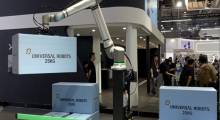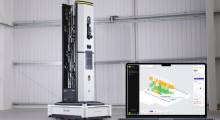Schneider Electric yesterday launched the Lexium Cobot, which is designed to work alongside humans and to move with dynamic torque and speed monitoring.
“The launch of the Lexium Cobot represents a significant leap in the evolution of robotics,” said Hugo Lafontaine, vice president of Industrial Automation Canada at Schneider Electric, in a release. “Unlike traditional industrial robots that necessitate process integration from the outset, Lexium Cobots are purposefully engineered to collaborate seamlessly with workers.”
“They deliver swift ROI [return on investment and] effortless integration, without the need for extensive process overhauls,” he added. “[They also] contribute to the enhancement of plant agility, productivity, and safety.”
Schneider Electric said it is a leader in the digital transformation of energy management and automation. The company said it integrates cloud technologies, controls, software, and services, enabling management of homes, buildings, data centers, infrastructure, and industries.
Lexium Cobot built for productivity, safety
Schneider Electric explained that it developed the collaborative robot to improve plant productivity and safety. The Lexium Cobot can help minimize downtime caused by labor shortages, which currently costs factories as much as 20% in productive capacity, it asserted.
The Mississauga, Ontario-based company said its cobot can handle various applications that would not be possible with conventional industrial robots.
All models have collision-detection and safety functions to ensure machine and human wellbeing, said Schneider Electric. The Lexium Cobot has rounded edges and a low total weight to further reduce the risk of injury to operations personnel, it said.
Depending on the application and risk assessment, these features can eliminate the need for additional safety equipment and thus take up 30% to 40% less space than traditional industrial robots, Scheider Electric claimed.
The company added that industrial plants can integrate the Lexium Cobot without spending large amounts of time and capital.
Lexium Cobots can work in standalone configurations, so they can help relieve human co-workers of heavy, repetitive, or complex tasks, said Schneider Electric. It also said they offer “significant weight-bearing potential and programming options:”
- Strong payloads – The Lexium Cobot’s five versions differ in size and working radius, with payloads ranging from 3 to 18 kg (6.6 to 39.6 lb.). They can handle monotonous tasks so operators can focus on more value-added work.
- Programming flexibility – Schneider Electric said it offers easy programming and commissioning with hands-on teaching. Graphical programming can help operators change applications and adapt quickly to production process changes, it noted.
Schneider Electric advances machine efficiency
“The Lexium Cobot’s high efficiency – through simple programming, quick setup, ease of use, and training – helps industrial companies recover investment costs faster when they modernize their facilities to become smart factories,” said Schneider Electric.
It touted the Lexium Cobot's lower cost of ownership, small footprint, and need for only minimal changes to existing production layouts. The new systems can also integrate with EcoStruxure, Schneider Electric’s Internet of Things (IoT)-enabled, “plug-and-play, open,” and interoperable architecture.
The cobot and ExoStruxure can reduce design, development, and commissioning time, making machine delivery and startup quick and easy, said the company.
Article topics
Email Sign Up
















